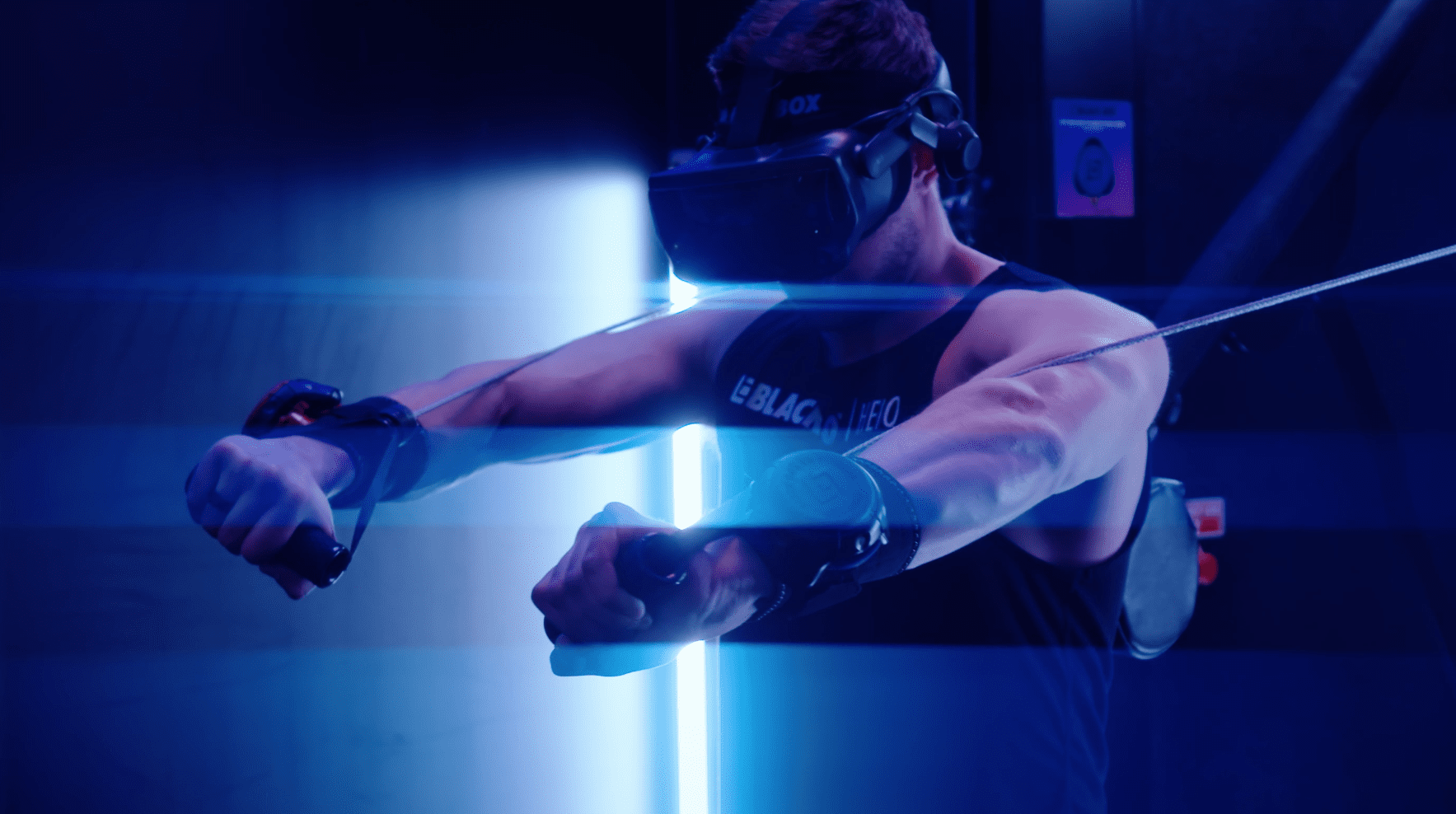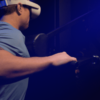Ryan DeLuca is the CEO of Black Box VR, the world’s first virtual reality fitness experience. Previously, he founded Bodybuilding.com and grew it to become the most visited fitness site in the world with nearly $500 million in annual revenue before stepping down as CEO in 2015.
What inspired you to create Black Box VR, and how did your experience with Bodybuilding.com influence this vision?
The inspiration for Black Box VR came from observing a fundamental problem in the fitness industry – poor adherence. At Bodybuilding.com, I witnessed MILLIONS of people start fitness journeys with great enthusiasm, only to quit within weeks or months. The industry has an 85% dropout rate, which is staggering.
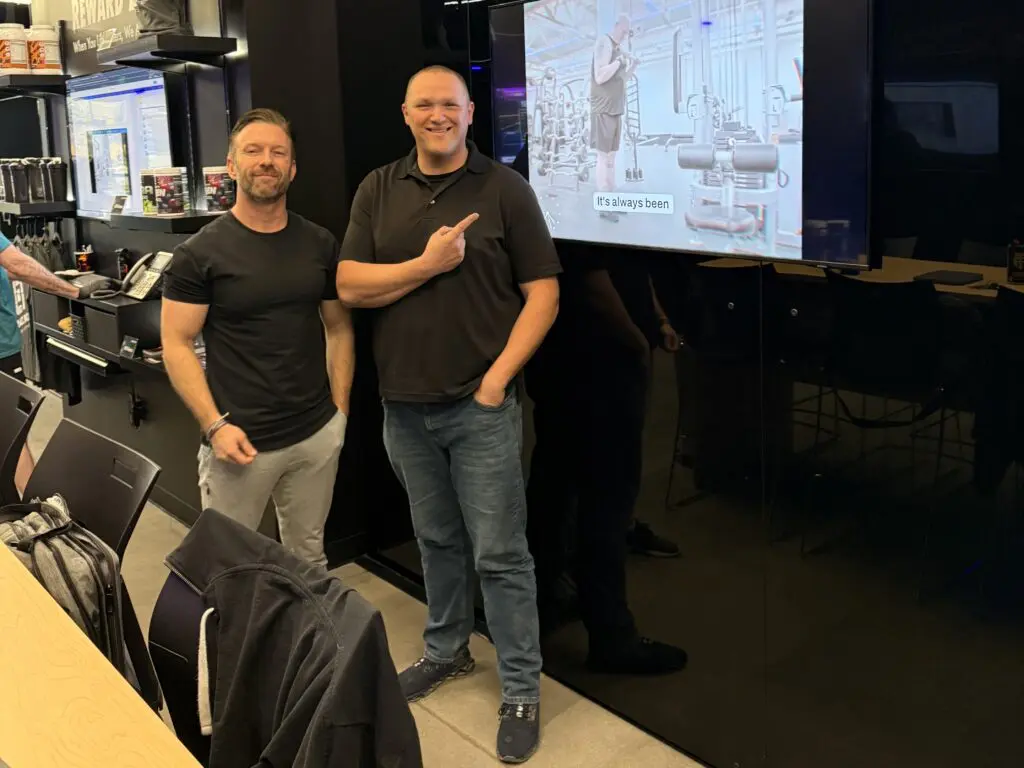
After selling Bodybuilding.com, I became fascinated with virtual reality and gaming psychology. I realized that games keep people engaged for hours – the average gamer plays 10+ hours weekly without external motivation. Meanwhile, getting people to exercise for 30 minutes is a struggle. That’s when it clicked: what if we could harness the addictive nature of gaming and apply it to fitness?
We wanted to create something that would solve the adherence problem once and for all. We combined resistance training with immersive VR gaming to make workouts feel like play. The technology is revolutionary, but the driving force was always about solving that human problem – making fitness engaging enough that people stick with it for life.
How does Black Box VR’s technology actually work, and what makes it different from other VR fitness solutions?
Black Box VR’s technology is truly one-of-a-kind. At its core, we’ve created the world’s first full-body resistance training system in virtual reality. Let me break down how it works:
When you step into one of our private booths, you put on a VR headset and stand in front of our proprietary resistance machine. This isn’t just any cable machine – it features electromagnetic servo motors that can automatically adjust resistance from just a few pounds up to 250 pounds. The machine automatically configures itself for different exercises – the handles move to different positions for chest press, overhead press, rows, and so on.
Inside VR, you’re transported to a virtual arena where you’re battling in what’s essentially a tower defense game. Each exercise you perform translates to different attacks. Do a chest press, and you shoot fire beams. Cable squats launch ice shards. These attacks have real strength behind them – the harder you push in the real world, the more damage you do in the game.
What truly sets us apart is that we’re not just tracking movement like other VR fitness games – we’re providing progressive resistance training. Our AI tracks every rep, adjusts your workout difficulty in real-time, and creates a personalized fitness journey. The resistance, rep ranges, and progression are all backed by exercise science, delivering genuine strength training results while you’re having fun playing a game.
No other system combines serious strength training with immersive gaming like we do. That’s why UCLA researchers found our workouts deliver better results than traditional exercise, with higher adherence rates. We’re not just making exercise fun – we’re making it effective.
Can you share some success stories or data on how Black Box VR has helped people transform their fitness journeys?
The transformations we’ve seen with Black Box VR have been incredible! And they go beyond just physical changes. Let me share a few stories and some data points that really demonstrate the impact.
One member had tried countless gym memberships over 15 years but never stuck with any program longer than a few weeks. With Black Box VR, he’s been consistent for over a year, dropped 35 pounds, and significantly increased his strength across all exercises. But what he tells us is most valuable is that he actually looks forward to his workouts now.
Another member was intimidated by traditional gyms and felt self-conscious working out in front of others. The private booth experience at Black Box VR eliminated that anxiety. She’s been with us for 8 months and has completely transformed her body composition and confidence.
From a data perspective, the results are equally impressive. UCLA conducted a scientific study on our system and found that participants using Black Box VR showed significantly greater improvements in muscle strength, endurance, and overall fitness compared to traditional exercise. They also experienced more fat loss and improved cardiovascular measures, all in half the workout time – 30-minute VR sessions versus 60+ minutes of conventional training.
Perhaps most telling is our adherence rate. Traditional gyms see around a 50% dropout rate within six months. Our adherence rates are tracking around 90%, which is unheard of in the fitness industry. People simply don’t quit because it doesn’t feel like a chore – it feels like playing a game!
These stories and numbers validate what we’ve believed all along: when exercise is engaging and fun, people stick with it, and they get results.
What challenges did you face in developing the hardware and software for Black Box VR, and how did you overcome them?
Developing Black Box VR presented some enormous technical challenges that hadn’t been solved before. We were essentially creating an entirely new category of fitness technology.
One of the biggest hurdles was synchronizing physical resistance with virtual reality. Traditional VR is designed for free movement, but we needed to pair it with a fixed resistance machine while maintaining proper tracking and alignment. Early prototypes had issues where the virtual world would drift out of alignment with the physical machine, creating a disorienting experience. We spent months improving our tracking algorithms to ensure perfect alignment.
On the hardware side, creating a resistance machine that could automatically reconfigure itself for different exercises was incredibly complex. We went through numerous iterations before landing on our current design with electromagnetic servo motors. Early versions were too noisy, too slow to adjust, or couldn’t provide consistent resistance throughout the range of motion. Our CTO Sam Lumetta and his team have designed a beautiful machine that is ready for large scale manufacturing.
Then there was the challenge of making the experience comfortable. We had to develop specialized systems and comfort modifications for the VR headsets to ensure users could complete intense workouts without discomfort. People now say they forget they even have the headset on!
Perhaps the most difficult challenge was creating a game that was both fun and effective as exercise. Many early versions were either too game-focused (fun but not challenging enough physically) or too exercise-focused (effective but boring). Finding that perfect balance took hundreds of iterations and user tests.
What helped us overcome these challenges was our team’s unique blend of expertise in both fitness and technology. We assembled a group of engineers who understood exercise science and fitness experts who could grasp the technological constraints. This cross-disciplinary approach allowed us to solve problems that would have stumped a more traditional team.
How do you see Black Box VR fitting into the broader fitness industry, and what’s your vision for scaling nationwide through franchising?
We see Black Box VR as pioneering an entirely new category in the fitness industry – what we call “strength gaming” or immersive fitness. Just as Peloton revolutionized cardio by bringing engaging, connected experiences to spin bikes, we’re transforming strength training through virtual reality and gamification.
In the broader fitness landscape, we’re not looking to replace traditional gyms but rather to serve a market that’s been underserved – people who find conventional workouts boring or intimidating. That said, we believe our approach represents the future direction of fitness, where technology and gaming principles make exercise more engaging and effective.
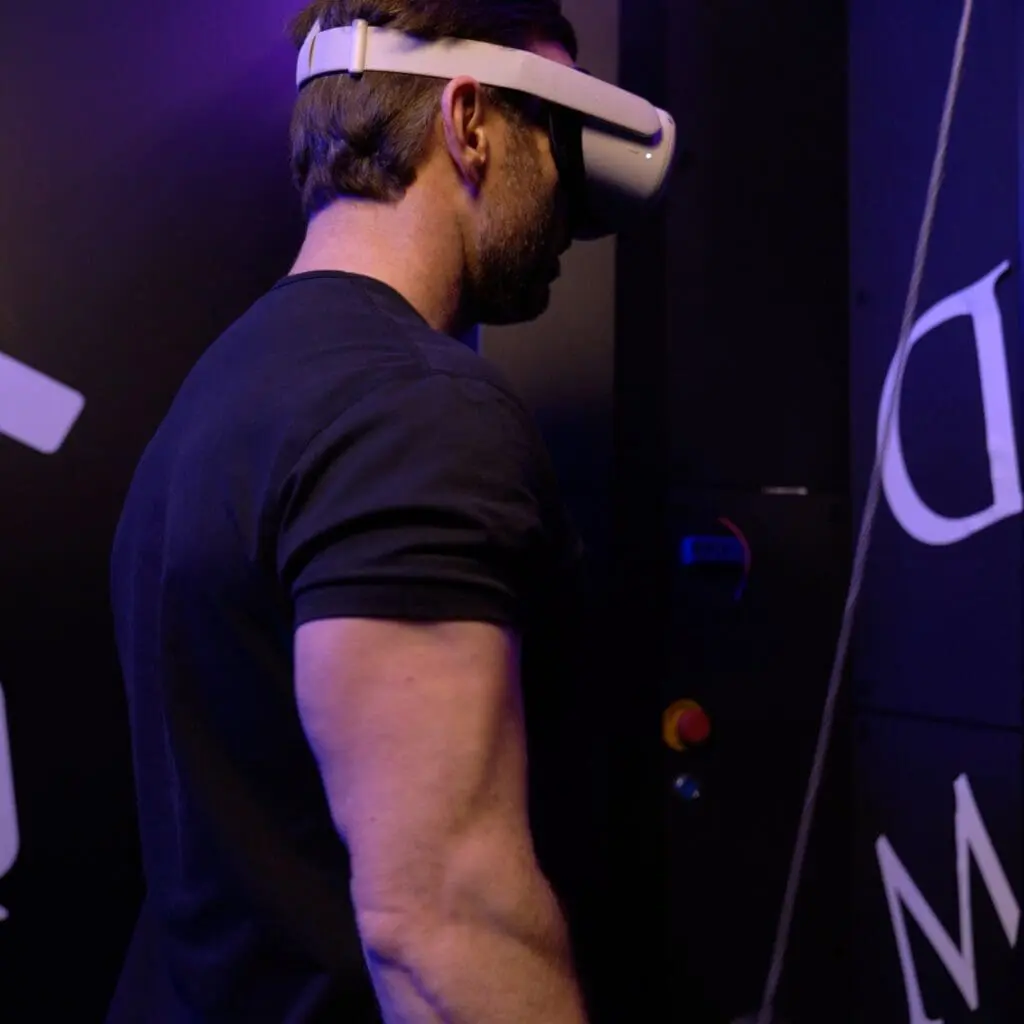
As for scaling, franchising is absolutely central to our growth strategy. We’ve proven the concept with our corporate locations, and now we’re ready to expand rapidly through franchising. We recently brought on Brad Ehrlich, who grew Orangetheory’s Illinois territory from 1 to 60 locations, as our Chief Growth Officer to lead this initiative.
Our franchise model offers several advantages over traditional fitness concepts. First, our uniqueness creates a true competitive moat – no one else is offering this experience. Second, our operations are streamlined – we need fewer staff than class-based studios because the VR system guides workouts. Third, our proprietary technology creates ongoing value for franchisees through regular software updates and new game content.
We’re focusing initially on North America, with a target of several hundred locations in the next 5-7 years. We’re being selective about franchise partners, looking for people who are passionate about both fitness and technology.
Ultimately, we envision Black Box VR locations in every major market, making this revolutionary fitness experience accessible to millions of people who might otherwise struggle with traditional exercise programs.
How does Black Box VR address “gymtimidation” and other psychological barriers that prevent people from sticking with traditional fitness programs?
“Gymtimidation” is a huge issue that the fitness industry rarely addresses directly. Studies show that 65% of people report feeling anxious or intimidated in gym environments, and this jumps to over 80% among fitness beginners. This fear of judgment is one of the biggest barriers keeping people from achieving their fitness goals.
Black Box VR directly tackles this problem through several intentional design elements. First, our private workout booths eliminate the feeling of being watched or judged. When you’re in your booth with the VR headset on, you’re completely immersed in your own experience – no one is watching you struggle with weights or comparing themselves to you.
Second, we’ve shifted the focus from exercise to gameplay. Instead of thinking about how many reps you’re doing or how much weight you’re lifting, you’re focused on winning the game. This psychological shift is powerful – it reframes exercise from a painful chore to an exciting challenge.
Third, our AI-driven system adapts to each person’s fitness level. There’s no feeling of not being “fit enough” to start, which is a common barrier. Whether you’re a complete beginner or an experienced athlete, the system adjusts to provide the right level of challenge.
Fourth, our progression is built around personal improvement, not comparison to others. While we do have leaderboards for those who enjoy competition, the core experience is about beating your own previous performances, not measuring up to others.
The result is that people who’ve felt uncomfortable in traditional gyms for years tell us they’ve finally found a fitness environment where they feel at home. Our members often say things like, “This is the first time I’ve been able to stick with exercise because I actually look forward to it,” or “I don’t feel judged here – I just feel like I’m playing a game.”
By removing these psychological barriers, we’re opening fitness to a much broader audience – including the millions who’ve been left behind by traditional gym experiences.
What does scientific research tell us about the effectiveness of VR fitness, and specifically Black Box VR’s approach?
The science behind VR fitness is extremely compelling, and our own research with Black Box VR takes it even further.
Broadly speaking, studies have consistently shown that VR can reduce perceived exertion during exercise – people work harder but feel like they’re working less. Research from universities like San Francisco State has demonstrated that immersive experiences can increase workout duration by up to 30% while decreasing perceived effort.
Where Black Box VR stands out is in the scientific validation of our specific approach. UCLA’s exercise physiology lab conducted a comprehensive 12-week study comparing Black Box VR workouts to traditional exercise. The results were remarkable:
Participants using our system showed significantly greater improvements in muscle size, strength, and endurance compared to traditional exercise. They also lost more body fat and improved cardiovascular measures – and amazingly, they achieved these superior results in half the time (30-minute VR sessions vs. 60+ minutes conventional).
Perhaps most importantly, the research demonstrated that our approach dramatically improved adherence. The VR group reported their workouts were more enjoyable and engaging, leading to a roughly 90% adherence rate, compared to around 50% for conventional exercise.
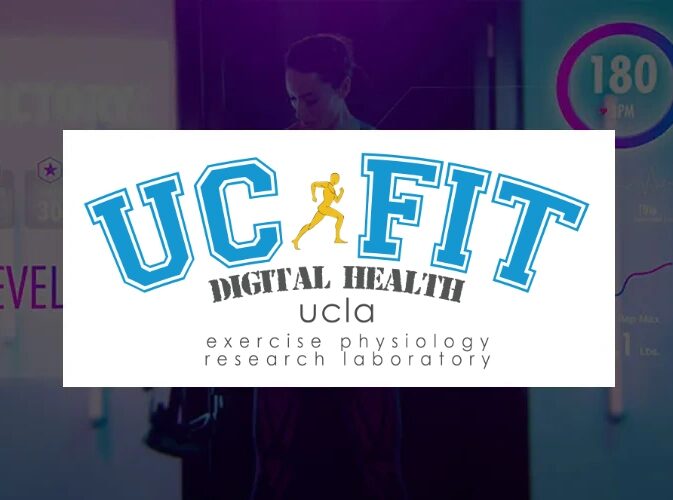
The science also supports our gamification elements. Studies show that features like points, levels, and achievements trigger dopamine release, creating positive feedback loops that reinforce exercise behavior. By incorporating these elements, we’re essentially “hacking” the brain’s reward system to make fitness addictive in a positive way.
What’s fascinating is how VR workouts affect pain perception. Research demonstrates that immersive experiences reduce pain signals by up to 40%, allowing users to push harder during workouts without the discomfort typically associated with high-intensity exercise. If you remove the misery, you make people want to come back again and again.
All of this scientific evidence validates what we’ve observed anecdotally – that our approach doesn’t just make exercise more fun, it makes it more effective and sustainable. And that’s the holy grail of fitness.
How do you keep the Black Box VR experience fresh and engaging for members over the long term?
Keeping the experience fresh is absolutely critical to our mission of solving the exercise adherence problem. We’ve developed a multi-layered approach to ensure members stay engaged for years, not just weeks or months.
First, we’ve created a seasonal content model, similar to popular games like Fortnite or Apex Legends. Every 90 days, we launch a new season with updated game elements, challenges, and rewards. These seasonal refreshes give members something to look forward to and create natural reset points for setting new goals.
Second, our progression system is designed for long-term engagement. As members level up their “Hero” status and earn XP, they unlock new Champions, powerups, exercises, and game mechanics. This means that month three feels significantly different from month one, and year two offers experiences that weren’t available in year one.
Third, we’ve implemented an achievement and quest system with hundreds of challenges to complete, ranging from simple to extremely difficult. These achievements give members alternative goals beyond just getting stronger or leaner, which keeps the experience multi-dimensional.
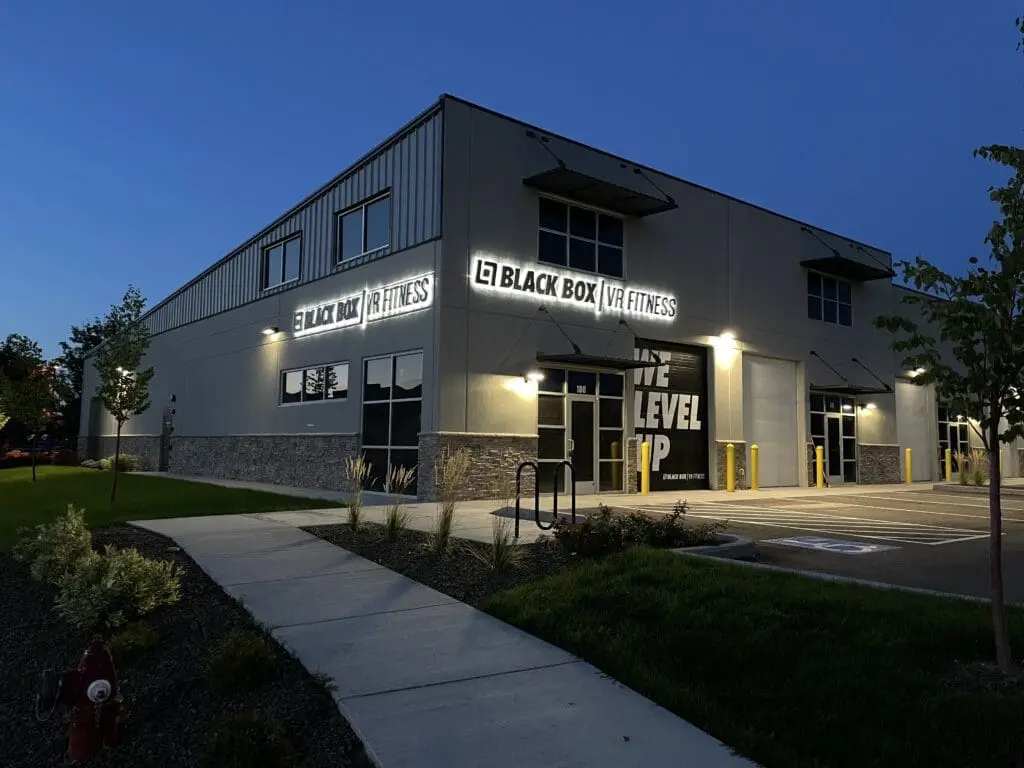
Fourth, we continually evolve our technology. We regularly release new game features, performance reports, and gym amenities based on member feedback. Our development team operates more like a gaming company than a traditional fitness company, with regular sprints focused on enhancing the user experience.
Fifth, we foster community engagement through events like gym-wide challenges, tournaments, and team-based competitions. These social elements create connections between members and tap into the power of friendly competition.
Together, these strategies and much more I didn’t discuss create an experience that remains novel and exciting even after hundreds of sessions. I’ve done over 1200 workouts in VR and it never gets old! It’s different every time. The proof is in our retention rates, which far exceed industry averages. Many of our early members are still with us years later, which is practically unheard of in traditional fitness.
What role does the Black Box VR community play in your overall vision, and how are you fostering this community?
Community is absolutely fundamental to our vision at Black Box VR. While our workout experience takes place in private booths, we’ve found that the social connections and sense of belonging that emerge from our community are powerful motivators for long-term engagement.
We’re fostering this community in several distinct ways:
First, within our physical locations, we’ve designed spaces for members to connect before and after their workouts. Our staff are trained to facilitate introductions between members with similar interests or goals and help them get onto cooperative teams. We regularly host in-gym events like award ceremonies, game nights, and social gatherings that bring members together in person.
Second, we’ve built robust digital community features. Our app includes team-based challenges where members can join forces to compete against other teams. We’ve implemented a social feed where members can share achievements, offer encouragement, and celebrate each other’s successes. The leaderboards create friendly competition, but we’re careful to ensure they motivate rather than intimidate.
Third, we’ve created a structured season-based reward program where members can digital and IRL rewards through consistent participation. This includes recognition systems like special status designations, exclusive gear, and even physical tokens of achievement like shirts, hats, pins, and more. These shared symbols help members identify as part of the Black Box VR tribe!
Fourth, we actively gather and implement community feedback. Our members have directly influenced game features, gym amenities, and even our expansion plans. This collaborative approach gives members a sense of ownership and investment in our growth.
What’s fascinating is how diverse our community has become. We have serious gamers working out alongside fitness enthusiasts who’ve never played a video game before. We have teenagers exercising next to retirees. This diversity is possible because our experience is so adaptable to different fitness levels and interests.
Ultimately, we see ourselves building more than just a fitness brand – we’re creating a movement of people who believe exercise should be engaging, empowering, and fun. The community that’s emerging around this shared vision is becoming one of our greatest strengths and a powerful driver of our growth.
Looking ahead 5-10 years, how do you see Black Box VR evolving with advances in technology, and what’s your ultimate vision for the company’s impact?
Looking ahead 5-10 years, I see Black Box VR evolving in exciting ways while staying true to our core mission of making fitness addictive and accessible to everyone.
Technologically, we’ll be incorporating advances in several areas. As VR headsets become lighter, more comfortable, and more powerful, our immersive experiences will become even more captivating. We’re closely following developments in haptic feedback, which will allow members to feel impacts and interactions in the game world. We’re also exploring more ways to track the player’s performance like with heart-rate monitors and much more.
AI will play an increasingly central role. Our system already learns from each user’s performance to optimize their training, but future iterations will become even more sophisticated. Imagine an AI coach that understands not just your fitness level, but your psychological motivations, energy patterns, and even how different factors like sleep or nutrition are affecting your performance.
From a business perspective, I see us expanding to thousands of locations worldwide through our franchise model, making Black Box VR accessible in most major cities. We’re also exploring specialized versions for different markets – corporate wellness programs, medical rehabilitation centers, universities, and potentially even a scaled-down home version once the technology becomes more affordable and there is some built-up demand.
But our ultimate vision goes beyond just building a successful business.
We want to fundamentally change how humans experience exercise. For too long, fitness has been associated with discomfort, boredom, and obligation. We want to transform it into something people genuinely look forward to – an activity as engaging as their favorite game, as social as their favorite sport, and as beneficial as traditional workouts!
If we succeed, the impact could be enormous. Physical inactivity contributes to millions of preventable deaths annually and billions in healthcare costs. By making exercise intrinsically rewarding rather than externally motivated, we will help address the global physical inactivity epidemic.
So while we’re excited about technological advances and business growth, our north star remains the same: to help as many people as possible find joy in movement and reap the life-changing benefits of consistent exercise! If ten years from now, millions of people who would have otherwise given up on exercise are still actively engaged because they’re having fun in our system, we’ll consider that a profound success. That’s my entire life’s purpose and I will never give up until we reach our goals. We have the team to do it!
—————————
Ready to dive in? Let’s make fitness your new favorite game. Welcome to the future – welcome to Black Box VR!
About Black Box VR
Black Box VR is the world’s first virtual reality esport that combines resistance training, HIIT cardio, and intense gaming to deliver a science-backed workout experience. In our luxurious gym locations, members are able to build muscle, lose fat, and get fit while playing an addictive game.
Have questions? Ask MAIA, our AI chatbot!
